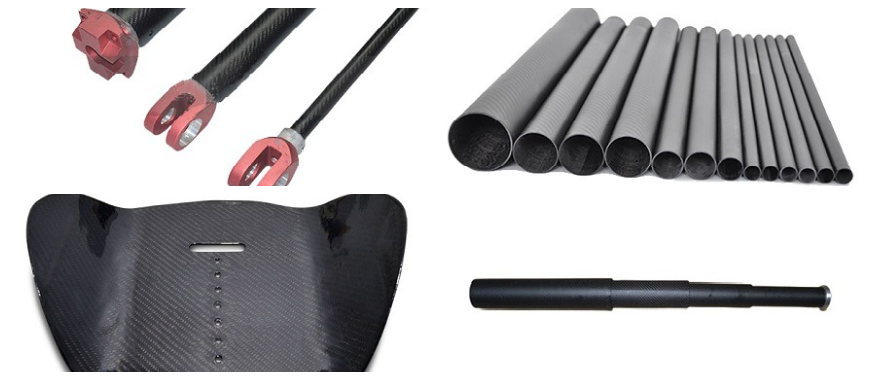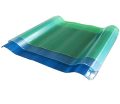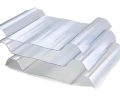
Fiberglass and carbon fiber are highly versatile materials used in numerous industries for their strength and lightweight properties. Fiberglass is often chosen for its cost-effectiveness and corrosion resistance, while carbon fiber excels in rigidity and tensile strength. Both materials are valued for their adaptability to various applications, from automotive to aerospace and beyond. Proper painting of these materials is crucial for enhancing durability, aesthetics, and overall performance. Fiberglass carbon fiber paint not only improves the visual appeal but also adds a protective layer against environmental factors. By choosing the right paint and preparation techniques, the longevity and functionality of these surfaces can be significantly increased. With careful attention to detail, exceptional results can be achieved on both fiberglass and carbon fiber surfaces.
Choosing the Best Paint for Fiberglass and Carbon Fiber
When selecting the ideal paint, understanding the characteristics of fiberglass carbon fiber paint is crucial. The right paint ensures durability, enhances aesthetics, and offers long-term protection against environmental damage.
Types of Paint
Polyurethane, Acrylic, and Enamel Paints
Polyurethane paint offers excellent durability and resistance to UV rays, making it ideal for outdoor applications. Acrylic paint is lightweight and flexible, providing a smooth finish and ease of use. Enamel paint is known for its glossy appearance and high durability, but it takes longer to dry. Each type of paint has specific strengths, and the choice should depend on the intended application and exposure conditions.
Why UV-Resistant Paints Are Recommended for Carbon Fiber
UV-resistant paints protect the carbon fiber’s integrity by preventing degradation caused by prolonged sunlight exposure. Without this protection, surfaces can weaken, lose their glossy appearance, and suffer structural damage. Using fiberglass carbon fiber paint with UV-resistant properties ensures longevity and maintains aesthetic quality, particularly in outdoor environments.
Spray Paint for Carbon Fiber
Spray paints are popular due to their convenience and ability to deliver an even coat. They allow for efficient application over large or complex surfaces, such as carbon fiber car hoods. However, they can lead to uneven coverage or drips if not applied correctly. The fast drying time is an advantage, but ensuring proper preparation and technique is vital to achieve optimal results.
Spray paints are widely used for automotive components like hoods and spoilers, as well as decorative finishes on other carbon fiber items. When combined with the right fiberglass carbon fiber paint, they provide a sleek and polished appearance while offering essential protection.
Paint Selection Considerations
Temperature resistance is a critical factor when choosing fiberglass carbon fiber paint, especially for components exposed to heat, such as automotive parts. Adhesion determines how well the paint bonds to the surface, affecting durability. The finish, whether matte, glossy, or satin, plays a significant role in aesthetic appeal. Understanding these factors ensures the selected paint meets both functional and visual requirements.
Matching the paint type to the surface ensures compatibility, avoiding issues like peeling or uneven texture. Fiberglass surfaces may require a flexible paint to accommodate slight movements, while carbon fiber benefits from paints that enhance its rigidity and finish. Selecting the correct fiberglass carbon fiber paint tailored to these materials provides superior performance and appearance.
Why Fiberglass Carbon Fiber Flat Bar Stock Excels
Preparing For Fiberglass Carbon Fiber Painting
Proper preparation is essential to achieve a flawless finish when applying fiberglass carbon fiber paint. Surface cleaning, sanding, and priming play critical roles in ensuring paint adherence and longevity.
Cleaning and Degreasing
The first step in preparing fiberglass and carbon fiber surfaces is thorough cleaning. Use a clean, lint-free cloth with a suitable solvent like acetone to remove grease, dirt, and any residual contaminants. Work systematically, covering all areas to ensure no debris remains. Focus on areas prone to buildup, such as edges or grooves. Repeat cleaning as needed until the surface is visibly clean.
Cleaning ensures the fiberglass carbon fiber paint bonds effectively to the surface. Grease and dust act as barriers, causing uneven application and peeling. Proper cleaning eliminates these issues, resulting in a durable and professional finish. In our work at GangLong Fiberglass, we emphasize meticulous surface cleaning as a foundational step for all painting projects.
Sanding the Surface
Sanding is a crucial step to create a smooth surface and enhance paint adhesion. For resin-coated areas, start with 80-grit sandpaper to remove gloss and achieve an even texture. Avoid sanding too deeply to prevent exposing or damaging the carbon fibers. For non-coated areas, use 120-grit sandpaper to ensure a clean and smooth finish without abrasion.
For best results, use circular motions while sanding to avoid patterns or uneven spots. Follow with finer grit, such as 240-grit, for final smoothing. Always inspect the surface after sanding to ensure no fibers are damaged. At GangLong Fiberglass, we recommend using high-quality sandpaper for consistent results and to preserve material integrity.
Priming the Surface
Primer serves as a critical layer between the material and the fiberglass carbon fiber paint. It improves adhesion, smooths imperfections, and seals the surface against environmental factors. Without a primer, paint may peel or fail to provide adequate protection. Applying primer also reduces the number of paint layers required, saving time and resources.
To apply primer, use a spray gun or brush for even coverage. Ensure the surface is clean and dry before beginning. Apply thin, consistent layers, allowing adequate drying time between coats. Pay attention to edges and corners to prevent uneven application. Our team at GangLong Fiberglass highlights the importance of using compatible primers designed specifically for fiberglass and carbon fiber materials.
By following these preparation steps, the surface becomes ready for the application of fiberglass carbon fiber paint, ensuring long-lasting performance and an impeccable finish.
Painting Techniques for Fiberglass Carbon Fiber Paint
Achieving a smooth and durable finish with fiberglass carbon fiber paint requires proper techniques tailored to the material and environmental conditions. Using the right methods, maintaining ideal conditions, and monitoring progress can significantly enhance results.
Application Methods
Brush painting is ideal for small, detailed areas or surfaces with intricate patterns. It allows for precise control and coverage in areas that are hard to reach with a spray. However, brush strokes may require additional effort to smooth out for a professional finish.
Spray painting is more efficient for larger, flat surfaces or cylindrical objects. It provides an even coat with minimal effort, reducing the risk of streaks. Spray painting is also faster and produces a sleek, uniform appearance, making it a preferred choice for automotive parts or decorative applications. At GangLong Fiberglass, we recommend spray painting for fiberglass carbon fiber paint projects involving large or smooth surfaces.
Apply thin, even layers of paint to avoid drips and pooling. Start with light passes, keeping the brush or spray nozzle moving steadily. Allow each layer to dry fully before applying the next. This technique prevents drips and ensures smooth, uniform coverage.
Temperature and Environment
Painting in a controlled environment is essential for fiberglass carbon fiber paint. Temperatures should be around 21°C (70°F) with low humidity. Proper ventilation ensures fumes are dispersed, creating a safe and clean workspace. Avoid painting in direct sunlight, as it can cause paint to dry unevenly or too quickly.
Excessive heat can soften the resin in fiberglass and carbon fiber, leading to weakened structures. To prevent this, avoid painting in environments where temperatures exceed 75°C. Use UV-resistant paints to protect surfaces from sunlight exposure, which can raise temperatures and damage the underlying material.
Rotating and Monitoring
For cylindrical objects, such as tubes or masts, rotating the surface during painting ensures even coverage. Use a makeshift stand or rotating device to keep the piece steady while allowing access to all sides. Focus on maintaining consistent application across the entire surface.
After each coat, inspect the surface under proper lighting for any streaks, uneven coverage, or drips. Sand out imperfections gently and clean the surface before applying the next layer of fiberglass carbon fiber paint. At GangLong Fiberglass, we emphasize regular monitoring to achieve a flawless finish every time.
By mastering these techniques, you can ensure a high-quality result when applying fiberglass carbon fiber paint, enhancing both appearance and durability.
Fiberglass Carbon Fiber Cutter Buying Guide and Tips
Fiberglass Carbon Fiber Paint: Finishing and Maintenance
Finishing and maintenance are essential for ensuring the longevity and durability of fiberglass carbon fiber paint applications. A well-executed clear coat, proper curing, and routine care all contribute to maintaining a flawless finish and preserving the material’s structural integrity.
Clear Coating for Protection
Clear coats play a vital role in protecting fiberglass carbon fiber paint from environmental damage. They form a barrier against moisture, dirt, and chemical exposure, enhancing durability and maintaining the paint’s appearance. UV-resistant clear coats also shield the surface from sunlight, preventing fading, yellowing, or resin degradation. At GangLong Fiberglass, we emphasize clear coating for all outdoor applications to ensure maximum longevity.
Step-by-Step Guide for Applying a Clear Coat
- Prepare the Surface: Ensure the painted surface is clean, dry, and free of dust.
- Choose the Right Clear Coat: Use a high-quality UV-resistant clear coat for maximum protection.
- Application Process: Apply thin, even layers using a spray or brush, starting with light coats.
- Allow Drying Between Coats: Let each layer dry fully before applying the next to avoid uneven coverage.
- Inspect for Imperfections: After each coat, check for drips or streaks and address them immediately.
- Final Drying: Let the final coat dry completely before handling or reinstalling components.
Drying and Curing
Fiberglass carbon fiber paint requires adequate drying and curing time to achieve its full strength and appearance. Water-based paints typically dry within a few hours, while solvent-based paints may need 24 to 48 hours. Ensure that the final clear coat has a curing period of at least 72 hours for optimal hardness and protection.
Reattaching components or handling painted surfaces too soon can cause scratches, dents, or smudges. To prevent damage, always adhere to recommended curing times before reinstalling parts. At GangLong Fiberglass, we advise waiting at least three days before subjecting painted surfaces to significant stress.
Long-Term Care
Regular maintenance is essential for keeping fiberglass carbon fiber paint looking its best. Clean surfaces with a mild soap solution and soft cloth to remove dirt without scratching. Avoid abrasive cleaners or tools that could damage the clear coat or underlying paint. For outdoor applications, consider periodic reapplication of a UV-protective wax to maintain a glossy finish and additional protection.
Importance of Regular Inspections to Prolong the Finish
Frequent inspections help identify minor imperfections or damage before they worsen. Look for chips, cracks, or fading in the paint or clear coat, particularly in areas exposed to harsh conditions. Promptly repairing these issues prevents further degradation. At GangLong Fiberglass, we recommend quarterly inspections for high-stress or outdoor applications to ensure the longevity of fiberglass carbon fiber paint.
By prioritizing proper finishing and maintenance, you can extend the lifespan of painted fiberglass and carbon fiber surfaces while preserving their appearance and functionality.
Best Fiberglass Carbon Fiber Chicago Reviews and Tips
Achieving Excellence with Fiberglass Carbon Fiber Paint
Proper preparation, application, and maintenance are crucial for achieving professional and durable results with fiberglass carbon fiber paint. By following best practices, you can enhance the material’s functionality and appearance, ensuring long-term performance.
Summary of Best Practices for Painting Fiberglass and Carbon Fiber
To achieve the best outcomes, start with thorough surface preparation. Cleaning and degreasing eliminate contaminants, while proper sanding creates a texture for optimal paint adhesion. Priming is essential to seal the surface and provide a strong base for the paint.
During the painting process, choose the right application method—spray painting for even coats on large areas and brush painting for precision work. Use thin, consistent layers and maintain ideal environmental conditions, such as moderate temperatures and proper ventilation. Clear coating protects the paint, adds UV resistance, and enhances the visual appeal.
At GangLong Fiberglass, we stress the importance of meticulous attention to detail in every step of the process. Each practice contributes to the longevity and aesthetics of fiberglass carbon fiber paint.
Final Thoughts on Achieving a Professional and Durable Finish
Fiberglass carbon fiber paint transforms surfaces into durable, visually appealing, and functional assets. The combination of proper techniques and high-quality materials ensures a lasting finish. Investing time in preparation and maintenance minimizes the risk of peeling, cracking, or fading, preserving the material’s integrity and appearance.
We encourage using our expertise at GangLong Fiberglass to guide your projects. Whether you’re working on automotive parts, outdoor structures, or decorative items, adopting these methods guarantees results that meet both aesthetic and performance expectations. Achieve excellence with fiberglass carbon fiber paint by committing to precision and quality throughout the process.
FAQs about Fiberglass Carbon Fiber Paint
The most suitable paint for carbon fiber is polyurethane or acrylic paint. These paints offer excellent durability, flexibility, and adhesion. For outdoor applications, UV-resistant paints are recommended to prevent fading or damage from sunlight. A primer specifically designed for carbon fiber should be used before applying paint to ensure strong adhesion and a smooth finish. Water-based and solvent-based paints can both be used, depending on the project’s requirements and the desired finish. At GangLong Fiberglass, we suggest choosing high-quality paints that meet the environmental and performance needs of your project.
Yes, carbon fiber and fiberglass can be effectively combined in certain applications. They complement each other by balancing strength and cost-efficiency. Carbon fiber offers superior rigidity and tensile strength, while fiberglass provides affordability and excellent corrosion resistance. When used together, they can optimize structural performance and reduce overall costs. However, care must be taken to ensure compatibility during the layering and curing processes. Proper adhesion and curing methods are essential to prevent delamination or structural weaknesses. At GangLong Fiberglass, we provide solutions that maximize the benefits of combining these materials.
The best coating for carbon fiber is a clear, UV-resistant polyurethane or epoxy coating. These coatings enhance durability and protect against environmental factors like moisture, dirt, and UV radiation. A clear coat not only protects the surface but also maintains or enhances the natural appearance of carbon fiber. When applied properly, the coating prevents scratches, discoloration, and damage, ensuring the carbon fiber retains its structural integrity. At GangLong Fiberglass, we recommend applying thin, even layers of clear coating to achieve optimal protection and a polished finish.
Painting carbon fiber can enhance its appearance and protect it from external damage, but it requires proper preparation and application techniques. If done correctly, the paint can create a durable and aesthetically pleasing surface. However, improper preparation, such as insufficient cleaning or sanding, can result in peeling or uneven paint adhesion. Using the wrong type of paint can also weaken the carbon fiber or affect its visual appeal. To avoid these issues, it is essential to use fiberglass carbon fiber paint specifically designed for this purpose. At GangLong Fiberglass, we emphasize the importance of following all preparation steps for a flawless and long-lasting finish.

As the editor of GangLong Fiberglass, I have years of experience and in-depth research, focusing on cable tray products, fiberglass solutions, and grille systems. I incorporate years of industry insights and practical experience into every content, committed to promoting the progress of the industry. At GangLong Fiberglass, my commitment is reflected in every product, from innovative cable trays to durable fiberglass solutions and sturdy grille systems. As an authoritative voice in the industry, my goal is to provide valuable information to professionals and businesses and promote forward-looking solutions.


